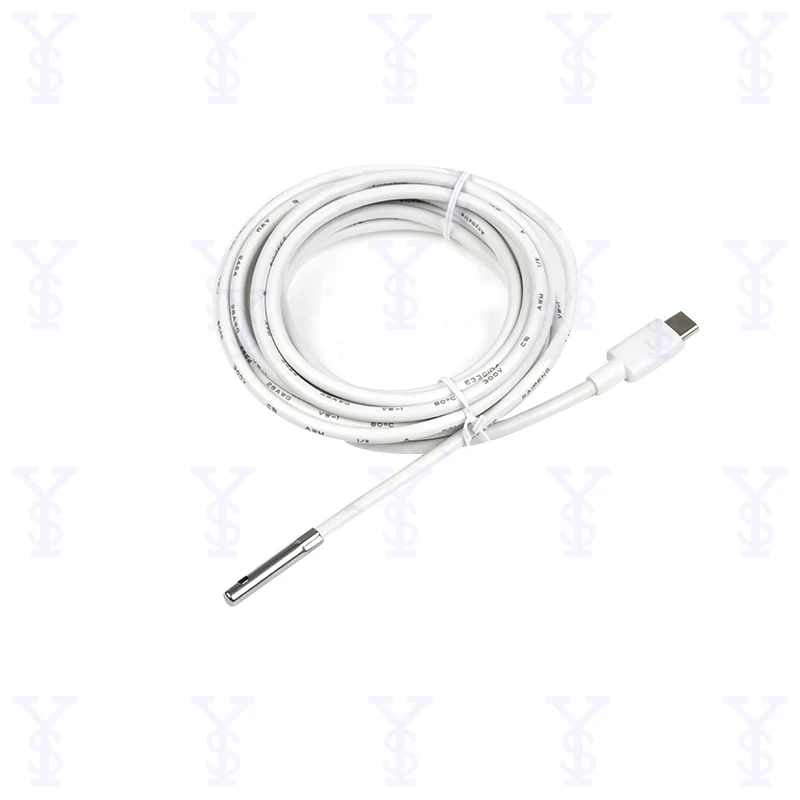Fout in e-mailformaat
emailCannotEmpty
emailDoesExist
pwdLetterLimtTip
inconsistentPwd
pwdLetterLimtTip
inconsistentPwd


Understanding the Importance of Portable Air Conditioner Temperature Sensors
As summer approaches, temperatures start to rise, and the hunt for effective cooling solutions begins. While many people rely on traditional air conditioning units, portable air conditioners have gained immense popularity in recent years. One of the key components that make these units effective and efficient is the portable air conditioner temperature sensor. In this blog, we will explore the significance of temperature sensors in portable air conditioners, how they work, their benefits, and tips for choosing the right portable air conditioner for your needs.
The Basics of Portable Air Conditioners
Before diving into the specifics of temperature sensors, let’s first understand what portable air conditioners are and why they have become a preferred choice for many homeowners and renters alike. Unlike traditional window or central air conditioning systems, portable air conditioners are compact, movable units that can be easily relocated from one room to another. They require minimal installation, usually involving just a window vent kit to expel hot air outside.
These units are particularly appealing for people living in small spaces, such as apartments or dormitories, where a full-sized air conditioning system may not be practical. Moreover, portable air conditioners provide flexibility, allowing users to cool specific areas as needed, rather than cooling an entire home.
The Role of Temperature Sensors in Portable Air Conditioners
Now, let’s discuss the heart of our topic: the portable air conditioner temperature sensor. This component plays a crucial role in regulating the unit's performance and efficiency. Here’s how it works:
1. Monitoring Temperature:
The primary function of a temperature sensor in a portable air conditioner is to monitor the ambient temperature of the room. It continuously measures the temperature and sends this information to the unit's control system.
2. Regulating Cooling:
Once the temperature sensor detects the current temperature, it helps the air conditioner decide whether to cool the air further or maintain the current temperature. If the room is too warm, the sensor signals the compressor to start cooling. Conversely, if the desired temperature is reached, the compressor will turn off or reduce its output.
3. Improving Energy Efficiency:
One of the most significant advantages of having a temperature sensor is the energy efficiency it provides. By regulating the cooling cycle based on real-time temperature data, the portable air conditioner can avoid overcooling the room. This not only helps save energy but also reduces wear and tear on the unit, prolonging its lifespan.
Benefits of Using Portable Air Conditioner Temperature Sensors
Temperature sensors are essential for optimizing the performance of portable air conditioners. Here are some of the benefits they offer:
1. Comfort Control:
The most obvious benefit is the enhanced comfort level they provide. With accurate temperature readings, the air conditioner can maintain a consistent and comfortable indoor climate, adjusting its cooling output as needed.
2. Energy Savings:
As mentioned earlier, temperature sensors improve energy efficiency by preventing unnecessary cooling. This can lead to lower energy bills and a reduced carbon footprint, making portable air conditioners a more environmentally friendly choice.
3. User Convenience:
Many portable air conditioners come with programmable settings that allow users to set their desired temperature. The temperature sensor enables these settings to be accurately maintained, allowing for a hassle-free cooling experience. Whether you’re at home or away, you can return to a perfectly cooled space.
4. Enhanced Longevity:
By ensuring that the unit operates optimally without overworking the compressor, temperature sensors contribute to the longevity of portable air conditioners. This means fewer repairs and a longer lifespan, ultimately saving money in the long run.
5. Smart Technology Integration:
With the rise of smart home technology, many modern portable air conditioners now come equipped with Wi-Fi capabilities. This allows users to monitor and control their units remotely via smartphone apps. The temperature sensor plays a vital role in these systems, as it provides real-time data that enhances user experience and convenience.

Choosing the Right Portable Air Conditioner
When it comes to purchasing a portable air conditioner, there are several factors to consider to ensure you get a unit that meets your needs. Here are some tips to help you choose wisely:
1. Cooling Capacity:
Portable air conditioners are rated in BTUs (British Thermal Units), which indicates their cooling capacity. When selecting a unit, consider the size of the room you wish to cool. A higher BTU rating is required for larger spaces, while smaller rooms can be effectively cooled with lower BTU units.
2. Temperature Sensor Quality:
Not all temperature sensors are created equal. Look for units that advertise high-quality sensors for better accuracy and responsiveness. This ensures that your portable air conditioner can effectively maintain the desired temperature without constant adjustments.
3. Energy Efficiency Rating:
Check the energy efficiency ratio (EER) of the portable air conditioner. A higher EER indicates better energy efficiency, which can lead to significant savings on your energy bills. Models with energy-efficient features often include advanced temperature sensors for optimal performance.
4. Noise Levels:
Some portable air conditioners can be quite noisy, which may be disruptive, especially in bedrooms or quiet spaces. Look for units with lower decibel ratings for quieter operation. Many models also come with noise-reducing technology that works in conjunction with the temperature sensor to optimize performance without excessive noise.
5. Portability Features:
Consider the weight and design of the unit. Lightweight models with caster wheels or handles are easier to move from one room to another. Additionally, ensure the unit includes a flexible exhaust hose for easy installation.
6. Smart Features:
If you’re interested in smart home integration, look for models that offer Wi-Fi connectivity and smartphone control. This feature can enhance your cooling experience and allow you to monitor temperatures remotely, leveraging the temperature sensor’s data.
Maintenance Tips for Portable Air Conditioners
To ensure your portable air conditioner continues to operate effectively, regular maintenance is crucial. Here are some maintenance tips:
1. Clean or Replace Filters:
Dirty filters can hinder airflow and reduce cooling efficiency. Check and clean the air filters regularly, and replace them as needed. Most manufacturers recommend doing this every month during peak usage.
2. Inspect the Drainage System:
Portable air conditioners often accumulate condensation, which needs to be drained regularly. Check the drainage system to ensure it’s functioning properly and clean any clogged drains to prevent water damage and mold growth.
3. Keep the Unit Clean:
Dust and debris can accumulate on the exterior and in the vents of your portable air conditioner. Wipe down the unit regularly and ensure that the intake and exhaust vents are clear to allow for optimal airflow.
4. Check the Temperature Sensor:
Periodically check the temperature sensor to ensure it’s functioning correctly. If you notice irregular temperature readings or the unit is not cooling effectively, it may indicate an issue with the sensor.
5. Store Properly:
If you don’t plan to use your portable air conditioner during the off-season, store it in a cool, dry place. Ensure it is clean and dry to prevent mold and mildew growth.
Conclusion
Portable air conditioners have become a popular choice for those seeking effective and flexible cooling solutions. The portable air conditioner temperature sensor is a vital component that enhances comfort, improves energy efficiency, and contributes to the unit's longevity. When selecting a portable air conditioner, consider factors like cooling capacity, temperature sensor quality, and energy efficiency to ensure you make the right choice for your space.
As you prepare for the warmer months, understanding the role of temperature sensors in portable air conditioners can help you make informed decisions, ensuring a cool and comfortable environment in your home. With proper maintenance and care, your portable air conditioner can serve you well for many summers to come. So, sit back, relax, and enjoy the comfort of a perfectly cooled space!

